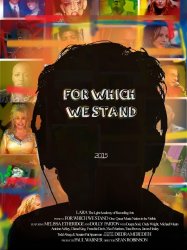Les films ayant le thème "Documentaire sur la musique", triés par recette

Loud Tour Live at the O2 (2012)
, 1h51Origine Etats-Unis
Thèmes La musique, Documentaire sur la musique, Musique
Acteurs Rihanna

Oil Sands Karaoke (2013)
, 1h22Origine Canada
Genres Documentaire
Thèmes L'environnement, La musique, Sexualité, Homosexualité, Documentaire sur l'environnement, Documentaire sur la musique, Documentaire sur les technologies, Musique, LGBT, LGBT
 , 1h17
, 1h17Origine Etats-Unis
Genres Musical
Thèmes La musique, Documentaire sur la musique, Musique
Acteurs Rihanna, Jay-Z

When Björk Met Attenborough (2013)
Genres Documentaire
Thèmes La musique, Documentaire sur la musique, Musique
Acteurs Björk, Tilda Swinton
The documentary opens with an introduction by Tilda Swinton, who gives a backstory about Björk's career and her intention with the Biophilia project, stating that the singer conceived the project wanting to redefine music in the 21st Century. Images from the "Moon and "Mutual Core" music videos accompany her speech. After that, some frames focus on the Graduale Nobili who are singing the backing vocals to "Thunderbolt" on a cliff in front of the ocean in Iceland. Thereafter the scene shifts to an early rehearsal of the Biophilia songs in Iceland during November 2010. The choir begin to learn their parts in "Thunderbolt" and "Moon" under the guide of the singer. After that, the documentary shows the encounter between Björk and Sir David Attenborough in the Natural History Museum in London. There, the naturalist and the singer discuss about the nature of music. They first talk about the importance of music and singing in the nature, with Attenborough explaining how music works for birds like the bird-of-paradise and the lyrebird, whose chirping is defined by the naturalist the "most complex sound ever", and he goes on by stating that the bird has developed an "impressive vocal range" which he compares to that of Björk. Attenborough states that the human larynx is capable of many more sounds that preceded language. Therefore, the singer asks him how he thinks music works for the modern people, and the naturalist explains how he thinks popular music is "extremely sexual", comparing popular music to medieval troubadors, and that is why is so relatable to young people and animals, i.e. the gibbons, which mate by singing together out of excitement. Attenborough affirms that "the mistery is how music has been used by humanity for something that is transcendental".

Lambert & Stamp (2014)
, 2hOrigine Etats-Unis
Genres Documentaire, Musical
Thèmes La musique, Documentaire sur la musique
Acteurs Roger Daltrey, Chris Stamp, Terence Stamp
The film narrates that how aspiring filmmakers Chris Stamp and Kit Lambert, searching a subject for their underground movie, wound up discovering, mentoring and co-managing English rock band The Who.

For Which We Stand (2013)
, 2hOrigine Etats-Unis
Thèmes La musique, Sexualité, Homosexualité, Documentaire sur l'homosexualité, Documentaire sur la musique, Musique, LGBT, LGBT
 , 45minutes
, 45minutesOrigine Etats-Unis
Thèmes La musique, Documentaire sur la musique, Musique
Acteurs Michael Jackson, Matthew Rolston

Lágrimas negras (1997)
Genres Documentaire, Musical
Thèmes La musique, Documentaire sur la musique, Musique

Love It Like a Fool (1977)
Genres Documentaire
Thèmes La musique, Documentaire sur la musique, Musique

Eddie Murphy: Delirious (1983)
, 1h9Réalisé par Bruce Gowers
Genres Comédie, Documentaire
Thèmes La musique, Documentaire sur la musique
Acteurs Eddie Murphy
One-man show d'Eddy Murphy filmé pour la télévision

Billy Connolly Live 1994 (1994)
Origine Royaume-uni
Thèmes La musique, Documentaire sur la musique
Acteurs Billy Connolly

N.Y.H.C. (1999)
, 1h27Genres Documentaire, Musical
Thèmes La musique, Documentaire sur la musique, Documentaire sur les villes
One of the few documentaries focusing on the hardcore music scene of one city (after the genre became much less tied to, and a subgenre of punk rock), N.Y.H.C. featured seven bands prominent in the mid-90s scene. A diverse grouping was selected, from Long Island suburbanites to Bronx inner-city youth to Hare Krishna devotees.
 , 2h10
, 2h10Origine Etats-Unis
Genres Documentaire, Musical
Thèmes La musique, Documentaire sur la musique
Acteurs Michael Jackson, Diana Ross, Lionel Richie, Howard Hesseman, John Moschitta, Jr., Richard Pryor

Modulations (1998)
Réalisé par Iara Lee
Genres Documentaire, Musical
Thèmes La musique, Documentaire sur la musique, Documentaire sur les technologies, Musique
Acteurs Giorgio Moroder
 Connexion
Connexion